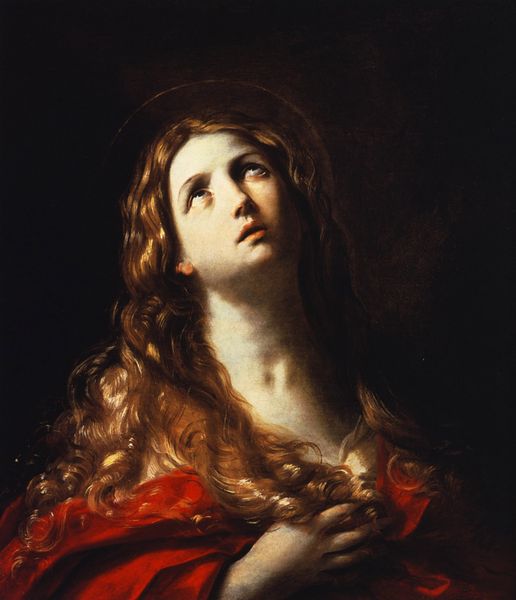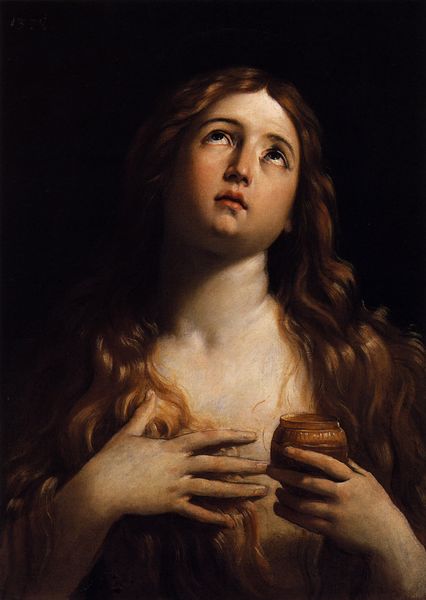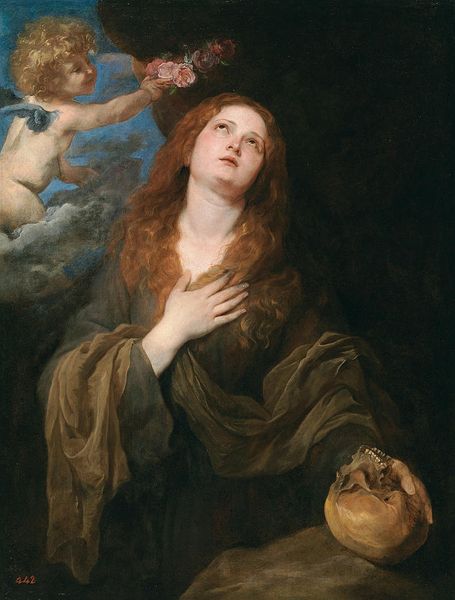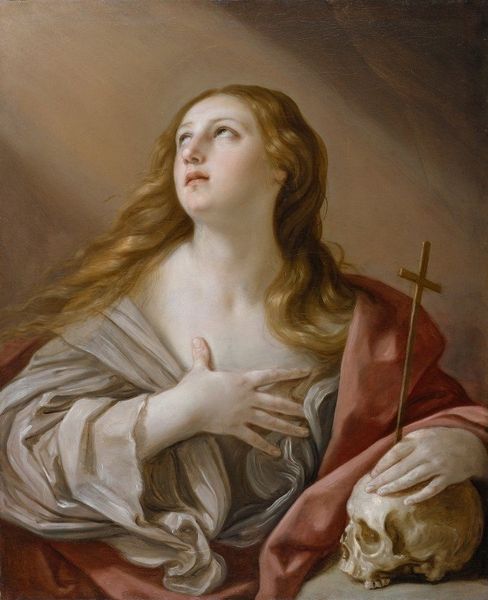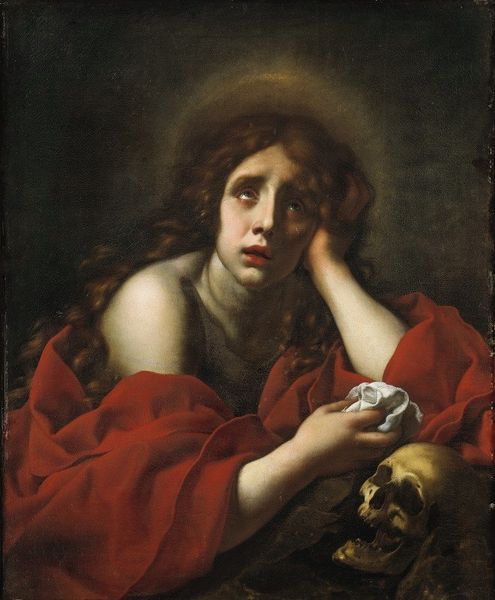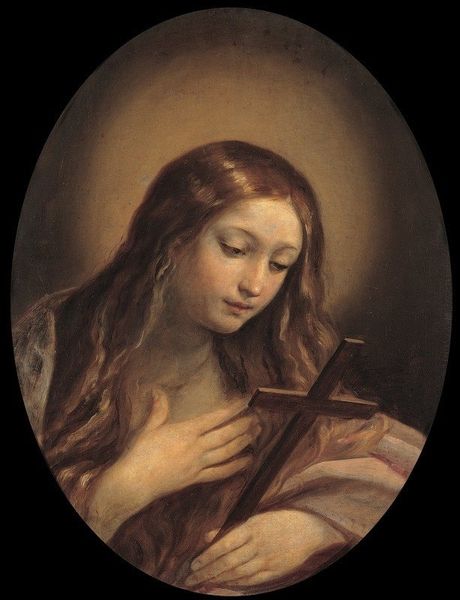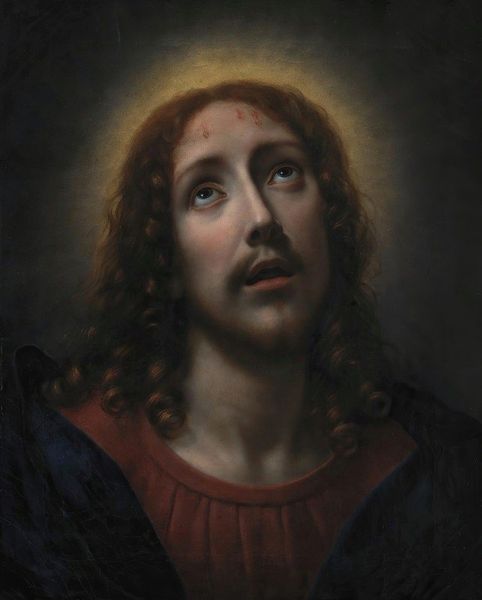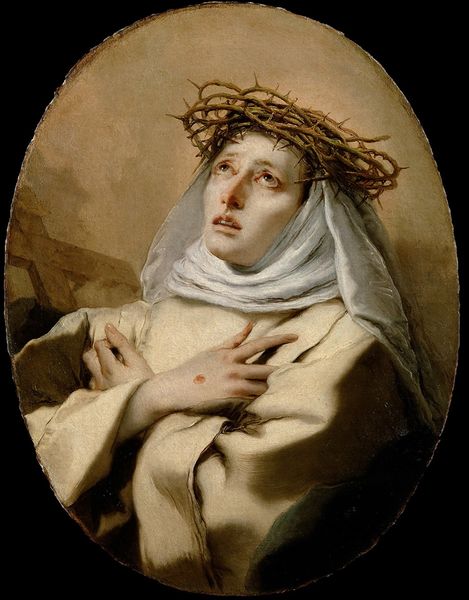
painting, oil-paint, canvas
#
portrait
#
baroque
#
painting
#
oil-paint
#
figuration
#
canvas
#
male portrait
#
chiaroscuro
#
history-painting
#
academic-art
#
nude
#
portrait art
Dimensions: 64 cm (height) x 48 cm (width) (Netto), 87.5 cm (height) x 71 cm (width) x 6.2 cm (depth) (brutto)
Editor: So here we have Girolamo Troppa's oil on canvas, *The Penitent St Mary Magdalene*, created sometime between 1665 and 1668. There's such an intense feeling of remorse and spirituality radiating from this image. How do you interpret this work? Curator: What strikes me is the performance of penitence, and how that intersects with the male gaze prevalent during the Baroque period. Mary Magdalene’s tears and upturned gaze invite the viewer into a moment of intensely personal grief, but simultaneously her partially exposed state makes her vulnerable. Consider, what societal expectations and religious dogma were being reinforced by presenting a female figure, even a repentant one, in this way? Editor: It's interesting that you bring up vulnerability and societal expectations. Do you think Troppa intended to critique these power dynamics, or perhaps reinforce them? Curator: It’s difficult to ascertain Troppa’s personal intent definitively. However, analyzing the painting through a feminist lens highlights how artistic depictions like this one often contributed to the construction of female identity within a patriarchal framework. The figure is individualized but, simultaneously, made representative of woman, repentance and redemption, no? The *male* artist, portraying an attractive *female* subject, for a powerful *male* patron - one has to ask for whose benefit the image was conceived and created. Editor: That reframing really changes my understanding of the work, thinking of the multiple layers of control and expected behavior that went into it. Thank you, this has been very enlightening. Curator: My pleasure! Art history offers a rich ground to examine historical biases and how those biases shaped not just art, but societal norms. I will definitely consider these issues when viewing baroque art in the future!
Comments
No comments
Be the first to comment and join the conversation on the ultimate creative platform.
